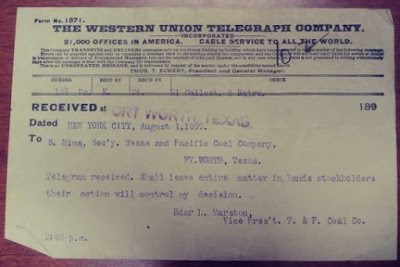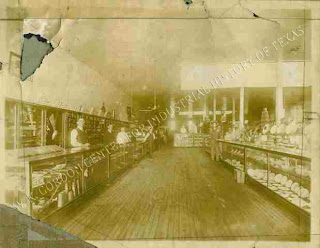Follow the Red Brick Road

By Mary Adams
Beginning in 1897, the Green and Hunter Brick Company, later known as the Thurber Brick Company, produced, and sold a special heavy-duty brick called a paver to many cities and towns in Texas. Roads in and around the stockyards and Camp Bowie Boulevard in Fort Worth, Congress Avenue in Austin, or Sea Wall Boulevard in Galveston are well known for their brick. However, lesser-known communities also relied on Thurber pavers for street improvement projects. Some towns have gone to great lengths to protect their red brick roads, while others have paved over or torn up the historic brick in favor of asphalt roads which do not require as much labor intensive maintenance.


Strawn and Lubbock differ in size and location, but they share at least two common characteristics. First, they have streets paved with Thurber brick and, second, the local government desires to protect and preserve this part of their history. Unfortunately, not all Lubbock’s 1920s era brick streets survive today. However, a 1999 article published in the Lubbock Avalanche reported, “Seventy-nine years later, 11 linear miles of brick streets remain in Lubbock.” The preservation of this “integral part of the city’s heritage,” began in 1982 when the Lubbock City Council passed a resolution “mandating that any portion of any brick surface disturbed by any public or private agency for whatever reason be replaced in a manner consistent with original construction.”
Strawn, located approximately 250 miles east of Lubbock but only 10 miles west of Thurber, chose to preserve the downtown portion of their streets. Though the Texas Department of Transportation covered over a brick portion of State Highway 16, the town has managed to save several blocks. As a part of their ongoing preservation efforts, Strawn city employees take great care to remove the pavers and stack them neatly when repairing the city water lines. Later, after all repairs are completed, workers come and relay them.
Brick carefully removed from Central Avenue in order to repair a water leak.
The decision to upgrade streets usually constituted a large expenditure. Some cities, like Stephenville, covered the cost through the use of municipal paving certificates. The city issued certificates to property owners and obligated them to pay for a percentage of the street improvements that bordered their lots.
Though Stephenville has not always been mindful of the preservation of its streets, attitudes have changed in recent years. According to the minutes from the August 7, 2007 Stephenville City Council meeting, a local repressentative indicated that there were 66 blocks of streets in Stephenville and at that time 16 had been restored to their original condition. Now Stephenville, like Strawn and Lubbock, makes a concerted effort to preserve and restore this small foundation of their history.

As a result of the use of brick from the Thurber Brick Plant, residents of many towns, small and large, still benefit from street improvements that took place a hundred years ago. So when walking or driving through Texas towns that have red brick streets, take a moment to reflect on the durability of something produced and laid in the beginning of the twentieth century.





